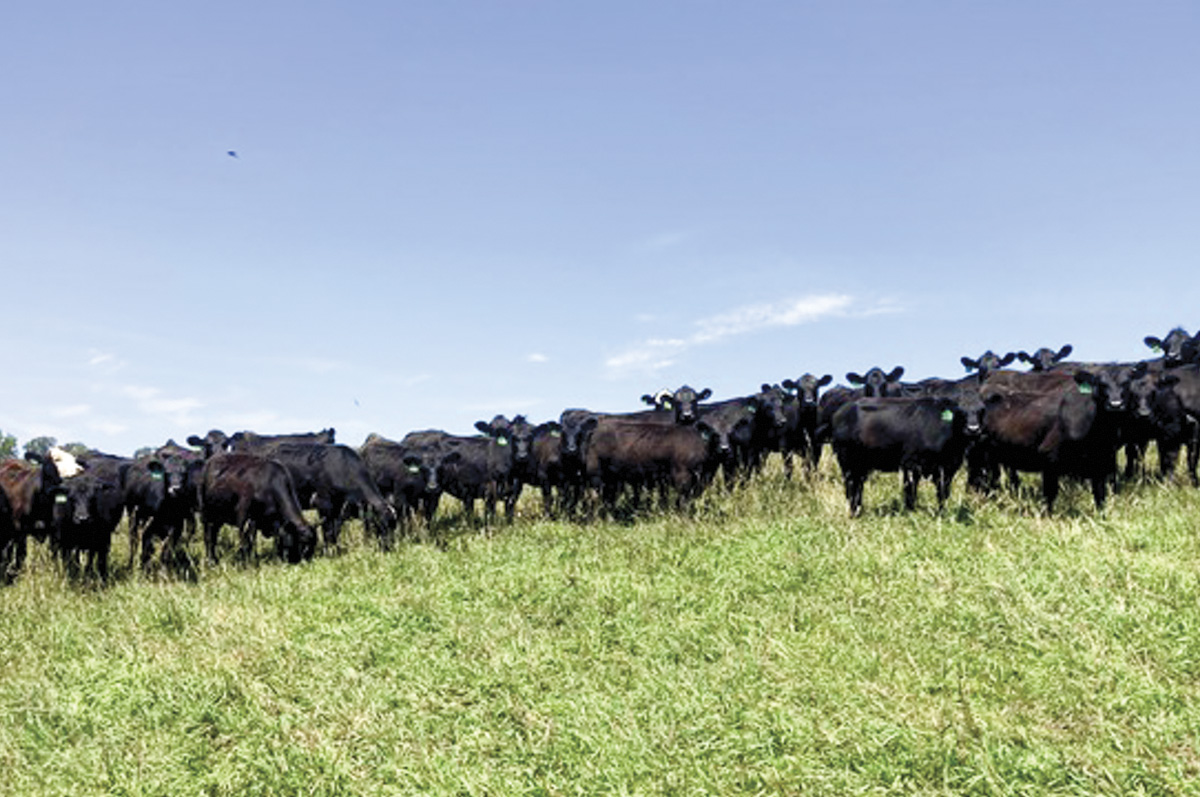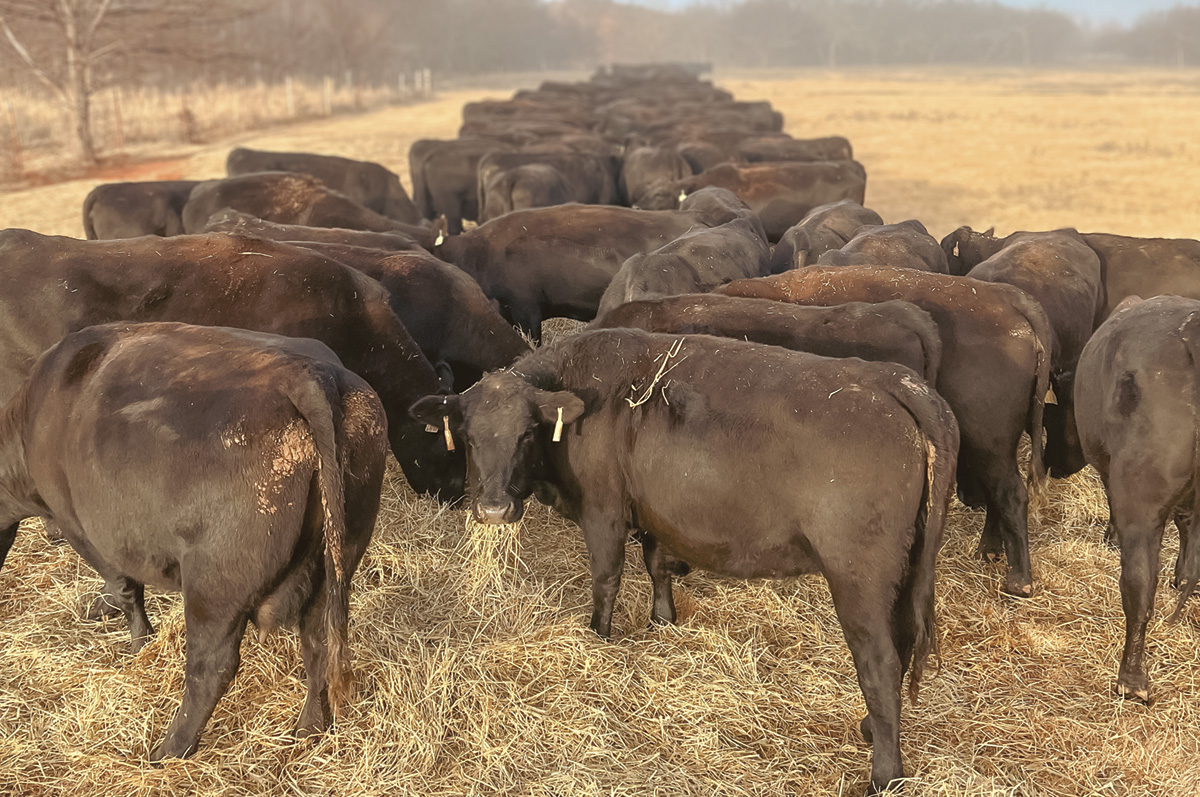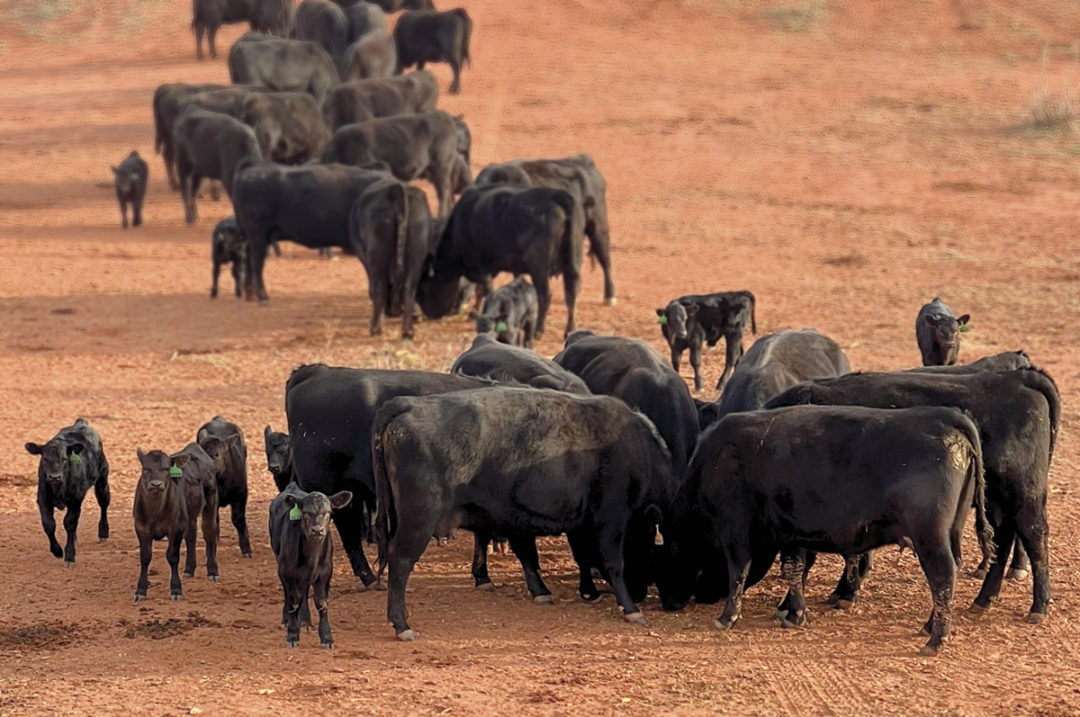Over the past few years, genetic testing has become more readily available and used by commercial cattlemen. Information that was once used mainly by registered cattle producers is being utilized to make improvements on commercial operations and produce higher-performing cattle by making decisions with more information. Three ranchers ranging in familiarity with genetic testing shared with us their experience and advice.
Taylor Ranch
Located in Cheyenne, Oklahoma, Taylor Ranch is owned and operated by Jimmy and Tracy Taylor. They started small, testing only two or three age groups of their commercial heifers and cows in the beginning and then slowly testing more as finances would allow. They have now been testing heifers for over 10 years.
“If you looked at it for just one year, it probably wouldn’t pencil out,” Taylor says. “But if you are in it for the long term, you’ll be in a much better place 10 years from now than if you didn’t use it.”
Taylor Ranch looks at 17 traits from the testing service they use, and according to Taylor, they pay attention to each one. He feels doing so creates less of a chance for the cows to become deficient in one trait while excelling in another, instead of having a balance. Carcass traits, however, do have an emphasis on the ranch as the cattle are primarily headed for the feedlot. Taylor has made significant progress in this area as he has used the information from genomic testing to better pair his cows with complementary registered bulls to target different traits. Between 2012 and 2019, he increased marbling by 24% and rib-eye area by 22%, while also reducing external fat on the animal.
“Both of those numbers are good for me because I’m increasing the number of Primes with that marbling, but at the same time, I’m reducing the number of Yield Grades 4 and 5 that I have,” he says.
Genetic testing has also allowed him to select bulls he otherwise would not have considered. By knowing what his cows are made of, a bull with a higher trait score than Taylor would want normally for his environment can be purchased and paired with a cow that is low in that same trait, turning a weakness into a strength.
“I’m just like a kid at Christmas waiting for that data to come back so I can start looking at where the improvements were and where I need to do a little more work,” Taylor says.
Moonshadow Ranch
New to the genetic testing scene, Evan Harper operates Moonshadow Ranch, where he manages a herd of about 300 commercial Angus and Angus-cross cattle in Logan, Iowa. He became interested in genetic testing after noticing his heifers conceived at a good rate but were not breeding back as well the following year.
“I know that [not breeding back] can be due to a variety of factors, but if there is a genetic factor that I can select for and reduce the number of females that fall out of the herd at a young age, I figure that could be a significant benefit to the operation,” Harper says. “It would save the time and money of developing them and instead sell them as market animals.”
With this first round of testing, he was surprised to find his heifers scored better from a feedlot perspective versus a maternal one. Harper retains a majority of his heifers as replacements. Because of this, he is planning to take a comprehensive look at all the traits but then try to focus on scores in traits such as fertility, feet and udder conformation.

Thanks to genetic testing, Moonshadow Ranch in Iowa hopes to be more able to select for better maternal traits in its replacement heifers. Photo provided by Evan Harper.
Another benefit he has found with genetic testing is using a testing program that determines the parentage of the cattle. Harper tends to have at least two bulls per pasture, so having this data can be valuable when evaluating the bulls’ performance and whether the bulls are worth continuing to use.
“I’d say the overall goal is to improve the quality and performance of the herd at a quicker pace, instead of, for example, having to wait a handful of years to see if a female’s feet or udder are going to go bad,” he says. “Instead, you can eliminate her and possibly her dam and/or sire from the herd before they populate the operation with even more offspring that won’t be profitable.”
With the new information from genetic testing, Harper kept 30 out of the 50 heifers he tested and culled the rest that did not meet the operation’s criteria. After doing so, he performed pelvic exams and only one heifer failed, whereas before he would usually have 5% to 10% of them fail.
“Of course, that could be coincidental,” says Harper about the pelvic exam results. “But I still found it interesting and look forward to checking the data again after pregnancy checks and other times to see how the numbers are matching up with what I am witnessing on the farm.”
Tucker Family Farms
Bill Tucker is well-known for his commercial seedstock operation in Amherst, Virginia. He has genetically tested females for about five years and has progeny-tested through a feedlot for 35 years.
Tucker Family Farms holds a replacement heifer sale every April that provides females to customers in seven states. The main breeds of cattle on the farm are Angus, Red Angus, Gelbvieh and Simmental. With those cattle, Tucker has created three main genetic groups: “power blacks” focused mainly on carcass quality, “maternal mamas” focused on maternal traits and “target reds” that attempt to balance everything together in a red cattle package.
“We want balanced-trait females that are going to wean a big calf and breed back as 3-year-olds,” Tucker says. “And we want those big calves to do well on the grid system when they are harvested and make our customers money.”
The genetic information is used mainly behind the scenes as a tool for the operation in preparation for the sale. Tucker gives his customers quality information that represents the cattle accurately, but he doesn’t like to overwhelm them with all the data.
When going through the data, Tucker says they look for outliers, especially outliers on the bottom end.

Taylor Ranch in Oklahoma looks at 17 genetic traits in their females, which they believe creates important balance in their cow herd. Photo provided by Jimmy Taylor.
“I think you have to sample everything,” he says. “I think the biggest mistake that most people make is they get all tuned up about finding the top 2 percent or 3 percent. In my judgment, you’ll make way more progress by getting rid of the bottom 10 percent than you ever will chasing the top 10 percent.”
The information he receives has helped him tailor the cattle to make the best product for his customers, whether that’s great carcass traits, quality mother cows or good dispositions.
“We’ve enjoyed a really good reputation for a number of years,” Tucker says. “And making sure that we don’t do anything to inadvertently sacrifice the quality of that reputation is probably the very first thing that I get from the testing; if there’s a red flag coming in the pipeline, I want to know it before anybody else does.”
Dylan Preston, a beef genetic inside sales representative at Zoetis, says there is no wrong size of operation to begin testing, nor is there a set number of cattle a producer has to test – it can be to the producer’s discretion. He also offered the advice to test early in the year before cattle go to grass. Doing this can give producers the ability to make important decisions right away and have data in their hands to assist in making some of those difficult decisions down the road as cattle develop.
“I think for the longest time, we’ve made visual selections and hoped they turned out in two years when that animal had her first calf,” Preston says. “Now as soon as that calf is dry, when she is born, we can pull a DNA sample and start to look at her genetic blueprint and start to make those decisions that soon. It’s not just the value of keeping the right replacements, but it’s eliminating the cost of keeping the wrong ones.”
Every operation has different goals in mind, from seedstock to feedlot performance. Having a greater insight into a herd might make the difference between years of managing around the same weak point and diminishing it out of the herd completely. Of course, producers must calculate whether this resource would equal out on the books and be in line with their purpose, but it is an option and has become one that commercial cattle can potentially benefit from.
“Genomic testing has taken the guesswork out of the equation,” Taylor says, “and allowed me to move forward at a much more rapid pace in all areas of my operation.”









